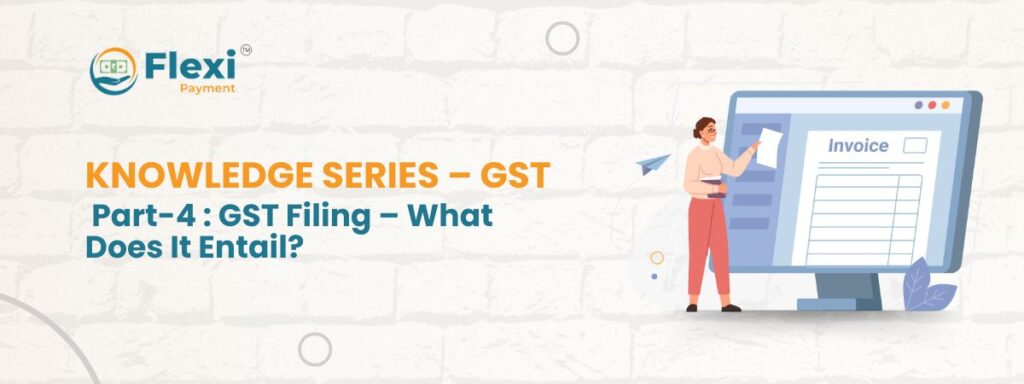What Constitutes a GST Return?
A GST return is a comprehensive document containing information regarding all revenue/sales and/or expenses/purchases that must be submitted by every GST-registered taxpayer (each GSTIN) to the tax administrative authorities. This document serves as a tool for tax authorities to determine the net tax liability.
Under the GST framework, registered dealers are obligated to file GST returns that encompass:
– Purchases
– Sales
– Output GST (applicable to sales)
– Input tax credit (GST paid on purchases)
Who is Required to Submit GST Returns?
Under the GST system, standard businesses with an annual aggregate turnover exceeding Rs. 5 crore (and taxpayers not enrolled in the QRMP scheme) are mandated to file two monthly returns and one annual return, totalling 25 returns annually.
Businesses with turnovers up to Rs. 5 crore have the option to file returns under the QRMP scheme. QRMP filers must submit a total of 9 GSTR filings each year, comprising 4 GSTR-1 and GSTR-3B returns each, along with an annual return. It’s important to note that QRMP filers are obligated to pay taxes on a monthly basis, despite filing returns quarterly.
Additionally, specific cases such as composition dealers require separate statements/returns to be filed. Composition dealers must file a total of 5 GSTR filings each year, including 4 statement-cum-challans in CMP-08 and 1 annual return GSTR-4.
How Many Returns Exist under GST?
There are a total of 13 returns under the GST framework, including GSTR-1, GSTR-3B, GSTR-4, GSTR-5, GSTR-5A, GSTR-6, GSTR-7, GSTR-8, GSTR-9, GSTR-10, GSTR-11, CMP-08, and ITC-04. However, not all returns are applicable to every taxpayer. The obligation to file returns is determined by the type of taxpayer or registration acquired.
Additionally, eligible taxpayers with a turnover exceeding Rs. 5 crore are mandated to submit a self-certified reconciliation statement in Form GSTR-9C.
In addition to the compulsory GST returns, taxpayers have access to statements of input tax credit, namely GSTR-2A (dynamic) and GSTR-2B (static). Furthermore, there is an Invoice Furnishing Facility (IFF) provided to small taxpayers enrolled in the QRMP scheme, allowing
them to submit their Business to Business (B2B) sales for the initial two months of the quarter. However, these small taxpayers are still required to remit taxes on a monthly basis using Form PMT-06.
A comprehensive overview of various GST returns, including their applicability and due dates, is outlined in the following section.
What are the various categories of GST returns and their respective filing deadlines?
Below is a compilation of all the returns mandated by the GST Law, along with their respective submission deadlines.
| Return Form | Description | Frequency | Due Date |
| GSTR-1 | Details of outward supplies of taxable goods and/or services affected. | Monthly | 11th of the next month. |
| Quarterly (If opted under the QRMP scheme) | 13th of the month succeeding the quarter. | ||
| IFF (Optional by taxpayers under the QRMP scheme) | Details of B2B supplies of taxable goods and/or services affected. | Monthly (for the first two months of the quarter) | 13th of the next month. |
| GSTR-3B | Summary return of outward supplies and input tax credit claimed, along with payment of tax by the taxpayer. | Monthly | 20th of the next month. |
| Quarterly (For taxpayers under the QRMP scheme) | 22nd or 24th of the month succeeding the quarter*** | ||
| CMP-08 | Statement-cum-challan to make a tax payment by a taxpayer registered under the composition scheme under Section 10 of the CGST Act. | Quarterly | 18th of the month succeeding the quarter. |
| GSTR-4 | Return for a taxpayer registered under the composition scheme under Section 10 of the CGST Act. | Annually | 30th of the month succeeding a financial year. |
| GSTR-5 | Return to be filed by a non-resident taxable person. | Monthly | 20th of the next month. |
| (Amended to 13th by Budget 2022; yet to be notified by CBIC.) | |||
| GSTR-5A | Return to be filed by non-resident OIDAR service providers. | Monthly | 20th of the next month. |
| GSTR-6 | Return for an input service distributor to distribute the eligible input tax credit to its branches. | Monthly | 13th of the next month. |
| GSTR-7 | Return to be filed by registered persons deducting tax at source (TDS). | Monthly | 10th of the next month. |
| GSTR-8 | Return to be filed by e-commerce operators containing details of supplies effected and the amount of tax collected at source by them. | Monthly | 10th of the next month. |
| GSTR-9 | Annual return by a regular taxpayer. | Annually | 31st December of the next financial year. |
| GSTR-9C | Self-certified reconciliation statement. | Annually | 31st December of the next financial year. |
| GSTR-10 | Final return to be filed by a taxpayer whose GST registration is cancelled. | Once, when the GST registration is cancelled or surrendered. | Within three months of the date of cancellation or date of cancellation order, whichever is later. |
| GSTR-11 | Details of inward supplies to be furnished by a person having UIN and claiming a refund | Monthly | 28th of the month following the month for which statement is filed. |
| ITC-04 | Statement to be filed by a principal/job-worker about details of goods sent to/received from a job-worker | Annually | 25th April where AATO is up to Rs.5 crore. |
| (for AATO up to Rs.5 crore) | |||
| Half-yearly | 25th October and 25th April where AATO exceeds Rs.5 crore. | ||
| (for AATO > Rs.5 crore) | |||
| (AATO = Annual aggregate turnover) |
***For taxpayers with an aggregate turnover equal to or below Rs 5 crore who are eligible and remain opted into the QRMP scheme, the filing deadline is the 22nd of the month following the quarter for taxpayers in category X states/UTs and the 24th of the month following the quarter for taxpayers in category Y states/UTs.
Category X includes states/UTs such as Chhattisgarh, Madhya Pradesh, Gujarat, Maharashtra, Karnataka, Goa, Kerala, Tamil Nadu, Telangana, Andhra Pradesh, as well as the Union territories of Daman and Diu and Dadra and Nagar Haveli, Puducherry, Andaman and Nicobar Islands, and Lakshadweep.
Category Y includes states/UTs like Himachal Pradesh, Punjab, Uttarakhand, Haryana, Rajasthan, Uttar Pradesh, Bihar, Sikkim, Arunachal Pradesh, Nagaland, Manipur, Mizoram, Tripura, Meghalaya, Assam, West Bengal, Jharkhand, Odisha, and the Union Territories of Jammu and Kashmir, Ladakh, Chandigarh, and New Delhi.
Please note that GST filing deadlines specified in the CGST Act are subject to changes via notifications/orders issued by CBIC.
Penalties for Failure to Timely File Returns
In the event of failing to file GST returns within the stipulated deadlines, you will incur interest charges and late fees.
Interest accrues at a rate of 18% per annum. The taxpayer is responsible for computing it on the outstanding tax amount from the day following the due date until the payment date.
Late fees amount to Rs.100 per day per Act, resulting in Rs.100 for CGST and Rs.100 for SGST, totaling Rs.200 per day, with a maximum cap of Rs.5,000. It’s worth noting that the maximum late fee amount has been revised as of the month/quarter ending June 2021.
| Taxpayer category | Late fee capped at |
| Taxpayers whose total amount of central tax payable is Nil | Rs.250^ |
| Taxpayers with an annual aggregate turnover up to Rs.1.5 crore in the previous financial year | Rs.1,000^ |
| Taxpayers with an annual aggregate turnover exceeding Rs.1.5 crore and up to Rs.5 crore in the previous financial year | Rs.2,500^ |
Taxpayers should note that an equal penalty will apply under SGST. There are no late fees under IGST
How are GST returns lodged or submitted?
Each type of GST return has specific formats designated for its submission. These forms must be filed through the GST portal. However, many taxpayers find these forms intricate and challenging to comprehend.
Is GST payment required on a monthly basis?
Regular taxpayers, including those enrolled in the Quarterly Return Filing and Monthly Payment of Taxes (QRMP) scheme, are obligated to remit GST monthly.
However, small taxpayers have the option to opt for the GST composition scheme if their annual aggregate turnover does not exceed Rs.1.5 crore for manufacturers/dealers and Rs.50 lakh for service providers. Under this scheme, they can file quarterly statement-cum-challans and settle their tax liabilities quarterly.

